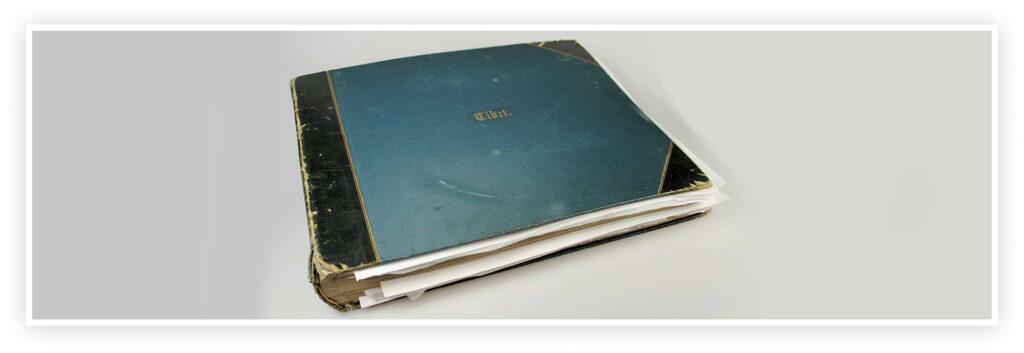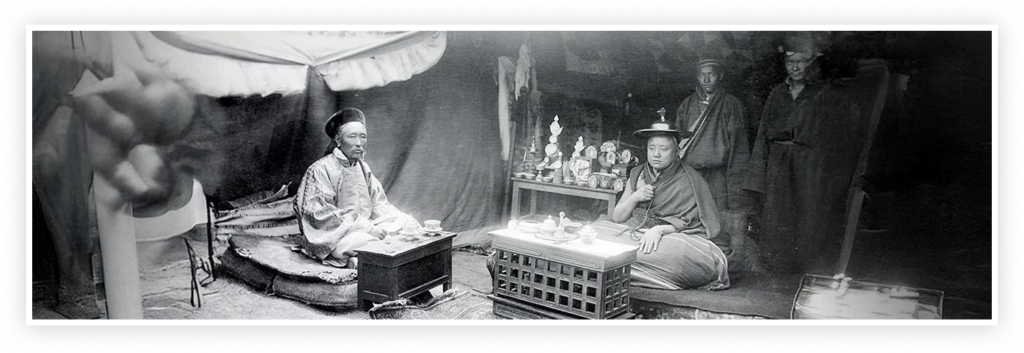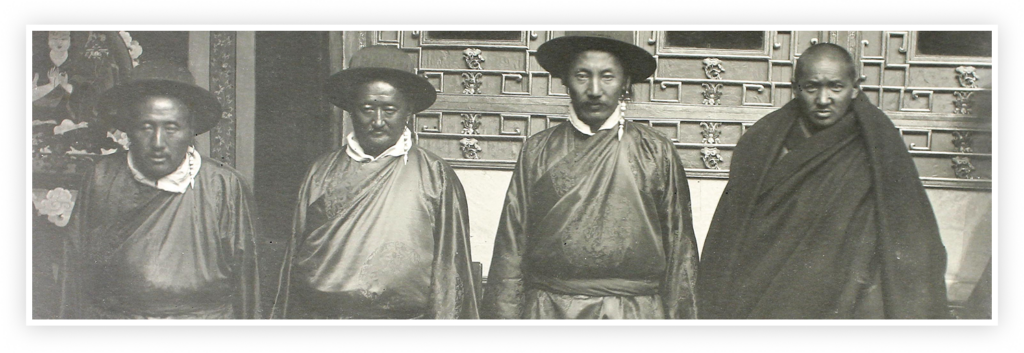The Lhasa Album
John Claude White’s Lhasa Album was not just a piece of British intelligence; it was originally made as a gift. During the tense negotiations White photographed the Tibetan, Bhutanese and Chinese officials he met. These men asked White to send them copies of the photographs on his return to India.

These large leather-bound photograph albums with gold lettering were prestigious gifts. They were also very expensive to produce.
This might explain why the Lhasa Album does not contain images of death and destruction. Many other British officers photographed dead or injured Tibetans and the looting of important places. John Claude White did not, or could not. His camera equipment was heavy and it took time to set up. It was therefore impossible to take ‘action’ shots. White also wanted to impress the men he had met in Tibet by giving them lavish photograph albums. Reminding them of the devastation he had helped cause was certainly not the best way to promote oneself.

White made albums for the 9th Panchen Lama, Thupten Chökyi Nyima, Badula (shown here with the Head Monk under the Panchen Lama or Tashi Lama), the Ganden Tripa Lobsang Gyaltshen one each for the four Shapés and a copy for the Bhutanese representative the Tongsa Penlop Ugyen Wangchuk. He also created an album for the Chinese Amban, Yu Tai.

The Shapés were photographed at Lhalu House during the final treaty negotiations.
John Claude White’s Lhasa Album was not just a piece of British intelligence; it was originally made as a gift. During the tense negotiations White photographed the Tibetan, Bhutanese and Chinese officials he met. These men asked White to send them copies of the photographs on his return to India.

This might explain why the Lhasa Album does not contain images of death and destruction. Many other British officers photographed dead or injured Tibetans and the looting of important places. John Claude White did not, or could not. His camera equipment was heavy and it took time to set up. It was therefore impossible to take ‘action’ shots. White also wanted to impress the men he had met in Tibet by giving them lavish photograph albums. Reminding them of the devastation he had helped cause was certainly not the best way to promote oneself.

